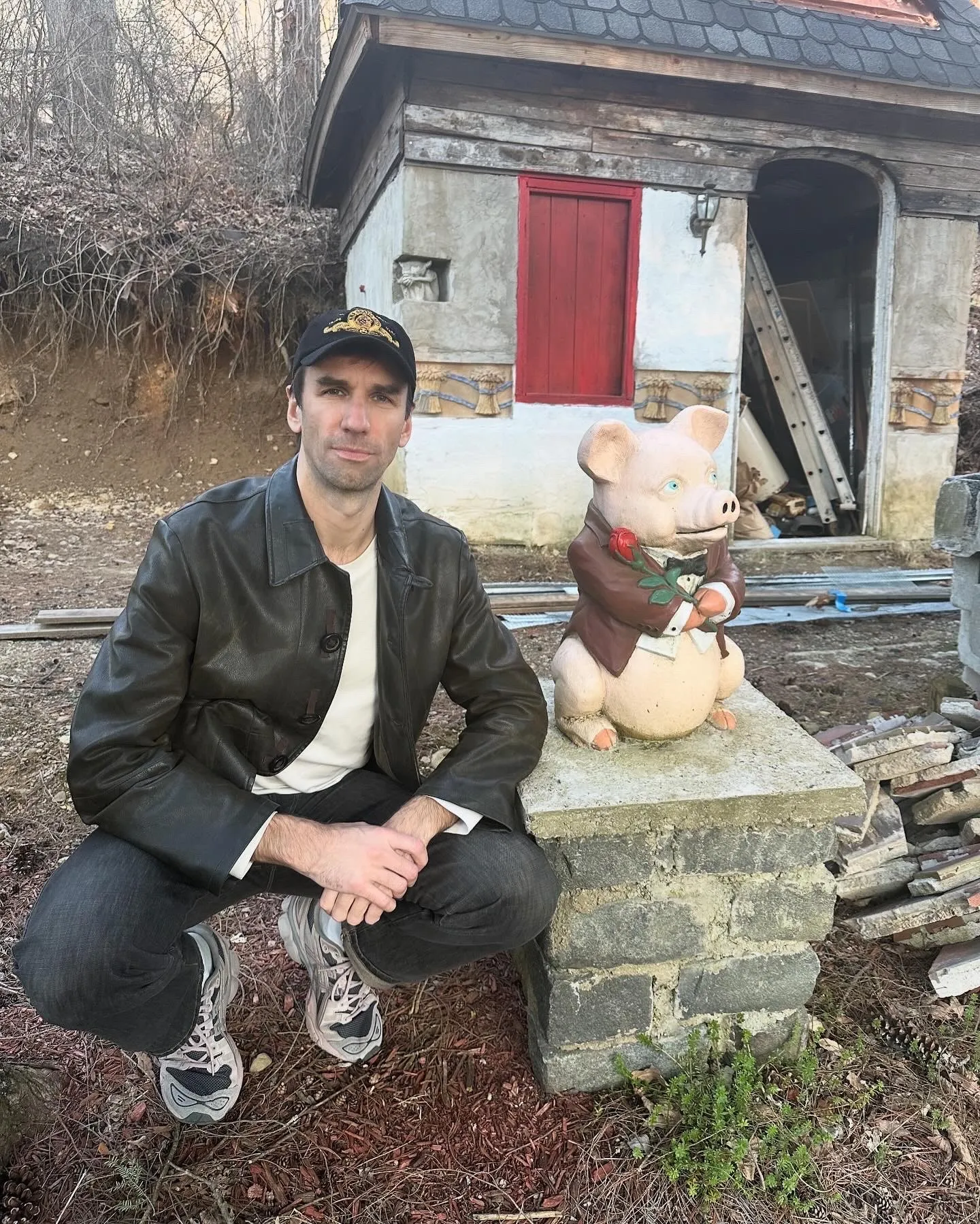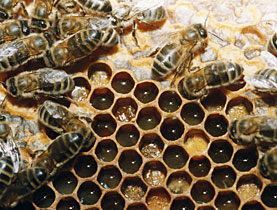Beekeepers stung by loss of colonies

In the rolling, green countryside of western Switzerland, behind a 400-year-old granary, Beat Aebischer spends most evenings tending to his bee colonies.
“It’s a passion but I’m trying to turn it into a business,” Aebischer says, still cheerful despite losing ten of his 32 colonies this winter.
In Europe, China and the United States, beekeepers in recent years have been confronted with severe and sudden colony losses and there are fears for the survival of industry.
Last year, around 30 per cent of Europe’s 13.6 million hives died, according to the international beekeeping body Apimondia. The rate in Switzerland was 18 per cent. The normal rate of winter loss is ten per cent but early indications are that the winter of 2008/9 has not been as drastic.
Two of the threats most commonly blamed for weakening bee colonies are insecticides and the deadly varroa mite. The trend of higher than normal deaths dates back to 2002.
“No bees, no people”
But this is not just about the honey business. As Aebischer puts it – “no bees, no people”. A third of European food crops rely on bees for pollination.
Despite the problems besetting bees, the Fribourg beekeeper remains optimistic. “Bees have been around for about 30 million years and have learned to acclimatise to all sorts of conditions.”
Aebischer is a typical semi-professional Swiss beekeeper, he works full time and looks after his bees in the evenings and at weekends. “I spend about 80 per cent of my free time at the apiary.”
When he talks about the bees, Aebischer’s face lights up. “Every colony has a different personality and the personality is based on the queen. If she is aggressive, they are all aggressive but if she is nice they are nice too.”
Although he has only been beekeeping for four years, he has amassed a vast amount of knowledge on the subject and is even attempting his own experiments to protect against the varroa parasite.
A man walks into a bar
Aebischer’s introduction to the world of beekeeping was serendipitous. He was in a local bar near the town of Düdingen reading an advert in the newspaper about a beekeeping course when an acquaintance came in.
The two struck up a conversation about bees and the man, who had 40 years of experience and dozens of hives, ended up offering Aebischer a start in the hobby. Now the men work together producing hundreds of kilos of honey per year.
Aebischer does not know what killed his bees this winter but he puts some of it down to his mistakes and the experimental methods he tried.
“But it’s possible I lost three to five queens because of pesticides. The trouble is it costs SFr120 to send a dead queen for analysis and you don’t always get a clear result.”
Added value
Asger Sørgaard Jørgensen, president of Apimondia, told swissinfo.ch that the economic situation for beekeepers was difficult.
“Beekeepers get their income from the sale of honey but this is actually only a very small part of the value created by beekeepers when pollination is taken into account.”
Asked whether he would like to be paid for the pollination contribution of his bees, Aebischer wasn’t too bothered. “But I would like to be able to insure my bees. At the moment you can only insure against two viruses.”
With modern farming methods bees have a lot to contend with. Apart from insecticides, large monoculture plantations also have an impact on their food supply.
“For example you see the rapeseed fields in bloom all over Europe and there is plenty of food for the bees but two weeks later it is a green desert in many areas,” Sørgaard Jørgensen explained.
Worst-case scenario
The worst-case scenario resulting from the decline of bees, according to Sørgaard Jørgensen, would be an impact on food production but it’s hard to quantify to what extent.
“For instance if you cannot grow fruit you would grow wheat or barley instead so it would cause major changes in our ability to provide a varied diet,” he said.
The seriousness of the situation is recognised by the scientific community. The Swiss Bee Research Centre is part of an international group of scientists and beekeepers – the Coloss network – trying to find solutions to the problems faced by the honeybee.
Meanwhile, beekeepers like Aebischer who suffered losses this winter will attempt to revive their lost colonies and protect their remaining bees as best they can.
Clare O’Dea in Fillistorf, swissinfo.ch
The death rate in Swiss bee colonies at the end of winter 2007/8 was 18%.
The previous winter (2006/7) saw a death rate of around 20%. Early indications are that this winter (2008/9) was less fatal.
Value of bee husbandry in Switzerland: SFr65 million in honey production, SFr270 in pollination contribution. Contribution to wild flora and fauna – priceless.
Taking into account their pollination value, bees are the third most valuable husbandry animal in Switzerland after cows and pigs.
The European honeybee lives from a few weeks to several months depending on whether it is a summer or winter bee.
In the summer, more than 1,000 bees are born each day and the same number also die. There are 50,000+ bees in a regular colony.
In winter the colony does not bring forth young bees and the natural mortality reduces.
Winter bees are born between August to October and they ensure the continuation to the new season.
Even a minimal shortening of their lifespan can compromise the spring relaunch and the survival of the colony.

In compliance with the JTI standards
More: SWI swissinfo.ch certified by the Journalism Trust Initiative












You can find an overview of ongoing debates with our journalists here . Please join us!
If you want to start a conversation about a topic raised in this article or want to report factual errors, email us at english@swissinfo.ch.